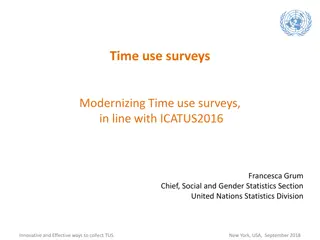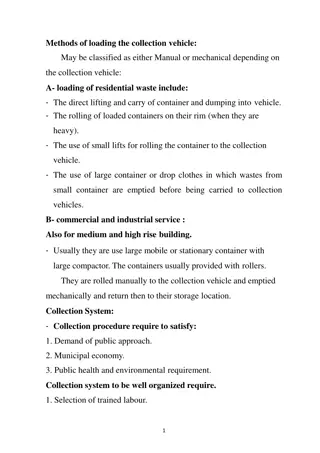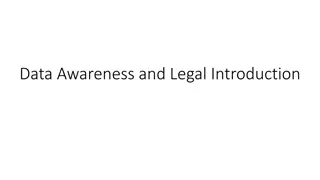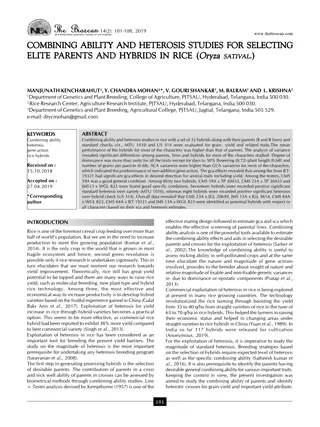Understanding Data Collection Methods in Health Sciences
Data collection in health sciences involves gathering raw facts systematically to answer research questions and evaluate outcomes. This includes selecting appropriate methods based on the nature of the enquiry, availability of resources, and required precision. Quantitative data collection focuses on measurable aspects expressed in numerical form, allowing for objective and reliable analysis through techniques like surveys and questionnaires. Quantitative methods are cost-effective, time-efficient, and enable standardized comparisons of findings.
Download Presentation

Please find below an Image/Link to download the presentation.
The content on the website is provided AS IS for your information and personal use only. It may not be sold, licensed, or shared on other websites without obtaining consent from the author. Download presentation by click this link. If you encounter any issues during the download, it is possible that the publisher has removed the file from their server.
E N D
Presentation Transcript
DATA COLLECTION METHODS OLUWADARE,T. DEPARTMENTS OF COMMUNITY MEDICINE & PUBLIC HEALTH
Introduction Data collection The process of gathering raw facts or evidence about a subject of interest in a systematic way, that enables one to answer stated research questions and evaluate outcomes. It can also be defined as gathering of information (figures, words or responses) that describes some situation from which conclusions can be drawn.
Introduction contd. Selecting appropriate method of data collection depends on Nature and scope of the enquiry Availability of funds Time factor Precision required
Why we collect data in health sciences Student activity
Data collection methods Quantitative Method This type of data collection deals with things that are measurable and can be expressed in numbers or figures, or using other values that express quantity. That being said, quantitative data is usually expressed in numerical form and can represent size, length, duration, amount, price, and so on. Quantitative research is most likely to provide answers to questions such as who? when? where? what? and how many?
Data collection methods contd. Quantitative Method Quantitative survey questions are in most cases closed-ended and created in accordance with the research goals, thus making the answers easily transformable into numbers, charts, graphs, and tables.
Data collection methods contd. Quantitative Method Quantitative data collection methods are often based on mathematical calculations Data obtained this way is usually seen as more objective and reliable than qualitative. Some of the most common quantitative data collection techniques include surveys and questionnaires (with closed-ended questions).
Data collection methods contd. Quantitative Method Compared to qualitative techniques, quantitative methods are usually cheaper and it takes less time to gather data this way. Due to a high level of standardization, it s much easier to compare and analyze the findings obtained using quantitative data collection methods.
Data collection methods contd. Quantitative Methods Closed-ended Surveys and Online Quizzes Closed-ended surveys and online quizzes are based on questions that give respondents predefined answer options to opt for. There are two main types of closed-ended surveys those based on categorical and those based on interval/ratio questions.
Data collection methods contd. Quantitative Methods Closed-ended Surveys and Online Quizzes Categorical survey questions can be further classified into dichotomous ( yes/no ), multiple- choice questions, or checkbox questions and can be answered with a simple yes or no or a specific piece of predefined information. Interval/ratio questions, on the other hand, can consist of rating-scale, Likert-scale, or matrix questions and involve a set of predefined values to choose from on a fixed scale.
Data collection methods contd. Qualitative Method Qualitative data is descriptive in nature rather than numerical. Qualitative data is usually not easily measurable as quantitative and can be gained through observation or open-ended survey or interview questions. Qualitative research is most likely to provide answers to questions such as why? and how?
Data collection methods contd. Qualitative Method Qualitative data collection methods are most likely to consist of open-ended questions and descriptive answers and little or no numerical value. Qualitative data is an excellent way to gain insight into your audience s thoughts and behavior (maybe the ones you identified using quantitative research, but wasn t able to analyze in greater detail).
Data collection methods contd. Qualitative method Open-Ended Surveys and Questionnaires Interview Direct observation Role playing
Data collection methods contd. Qualitative method Open-Ended Surveys and Questionnaires Opposite to closed-ended are open-ended surveys and questionnaires. The main difference between the two is the fact that closed-ended surveys offer predefined answer options the respondent must choose from, whereas open-ended surveys allow the respondents much more freedom and flexibility when providing their answers.
Data collection methods contd. Qualitative method Open-Ended Surveys and Questionnaires The findings of open-ended surveys are more difficult to compile and analyze due to the fact that there are no uniform answer options to choose from.
Data collection methods contd. Qualitative method Interview This method of collecting data involves presentation or oral/verbal stimuli and reply in terms of oral-verbal responses Interviewers ask questions which are aimed to get information required for study from respondent
Data collection methods contd. Qualitative method Interview Structured interview Predetermined questions Standardized techniques of recorded Interviewer follows rigid procedure Time required for such interview is less than non structured manner interview Analysis of data becomes easier
Data collection methods contd. Qualitative method Interview Unstructured No predetermined questions No standard techniques Interviewer has freedom to ask, omit , add any questions Ask questions without following sequence Analysis of data is difficult
Data collection methods contd. Qualitative method Interview Demerit of interview Expensive method Respondent may give bias information Takes more time when samples are more Systematic errors may occur Supervisors have to do complex work of selecting, training and supervising the field staff
Data collection methods contd. Qualitative method Interview Personal interview Telephone interviews Focused group interview/discussion key informant interview In-depth interview
Data collection methods contd. Qualitative method Interview Personal interview One-on-one (or face-to-face) interviews are one of the most common types of data collection methods in qualitative research. The interviewer collects data directly from the interviewee. This data collection technique is perfect when you need to gather highly-personalized data.
Data collection methods contd. Qualitative method Interview Personal interview Depending on your specific needs, the interview can be informal, unstructured, conversational, and even spontaneous (as if you were talking to your friend) it can be semi-structured and standardized to a certain extent. it s more difficult and time-consuming to process the obtained data
Data collection methods contd. Qualitative method Interview Personal interview Merits of personal interview Information at greater depth Flexibility of restructuring the questionnaire Interviewer by his skill can overcome resistance Non response generally low Personal information can be obtained Interviewer can collect supplementary information about respondent s personal characteristics and environment which has value in interpreting results
Data collection methods contd. Qualitative method Interview Focus groups The focus groups data collection method is essentially an interview method, but instead of being done 1-on-1, here we have a group discussion. Whenever the resources for 1-on-1 interviews are limited (whether in terms of people, money, or time) or you need to recreate a particular social situation in order to gather data on people s attitudes and behaviors, focus groups can come in very useful. Ideally, a focus group should have 3-10 people, plus a moderator.
Data collection methods contd. Qualitative method Interview Focus groups Depending on the research goal and what the data obtained is to be used for, there should be some common denominators for all the members of the focus group. For example, if you re doing a study on the rehabilitation of teenage female drug users, all the members of your focus group have to be girls recovering from drug addiction. Other parameters, such as age, education, employment, marital status do not have to be similar.
Data collection methods contd. Qualitative method Direct observation Direct observation is one of the most passive qualitative data collection methods. The data collector takes a participatory stance, observing the setting in which the subjects of their observation are while taking down notes, video/audio recordings, photos, and so on.
Data collection methods contd. Qualitative method Direct observation Due to its participatory nature, direct observation can lead to bias in research, as the participation may influence the attitudes and opinions of the researcher, making it challenging for them to remain objective. Also, the fact that the researcher is a participant too can affect the naturalness of the actions and behaviors of subjects who know they re being observed.























